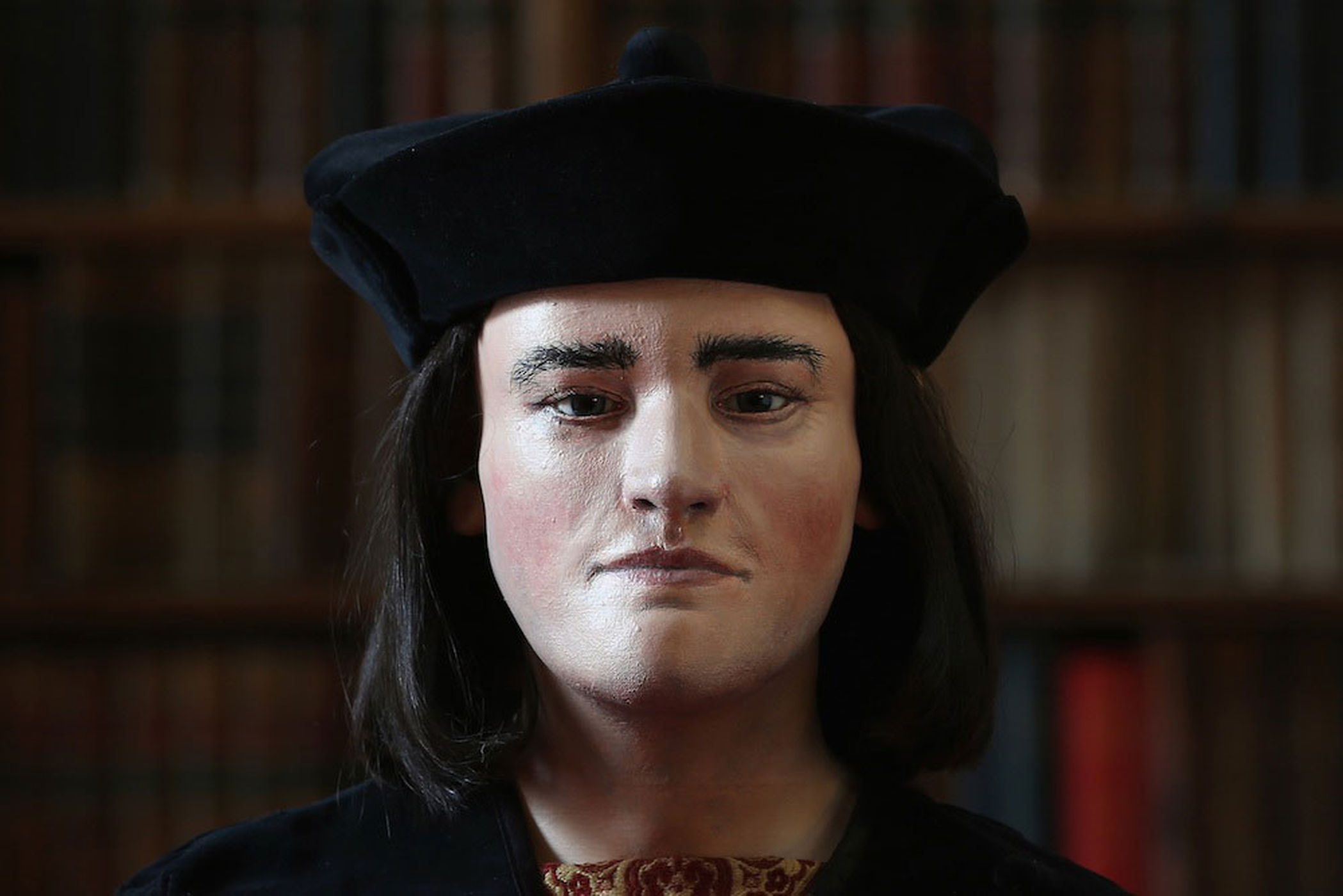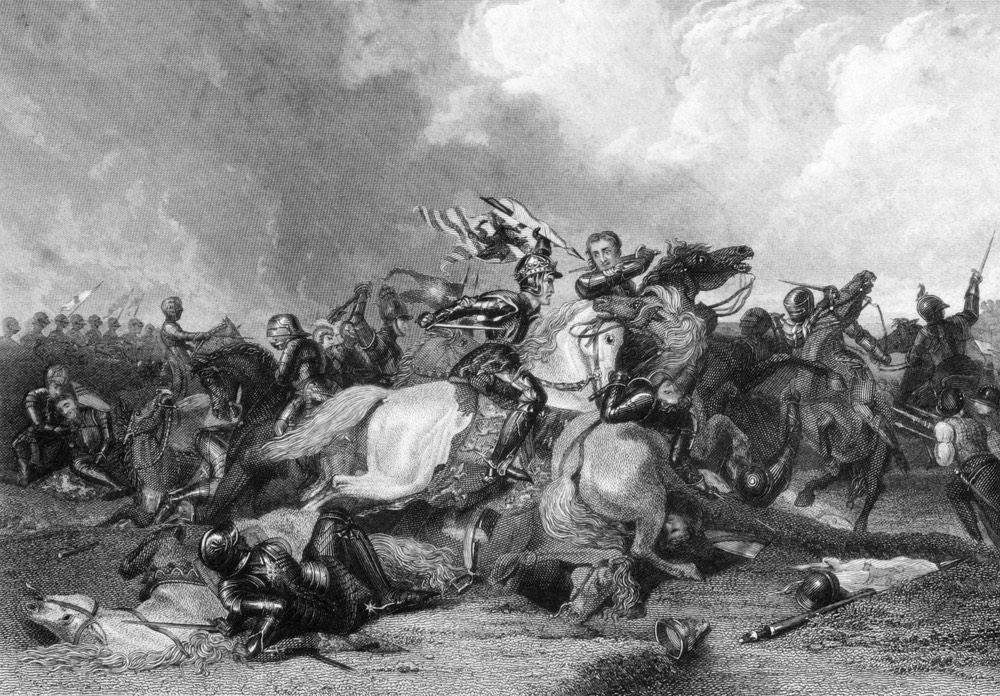Is the Ghost of Richard III a Football Fan?

Citizens of Leicester, England, have a new mascot for their footie team: the newly re-interred medieval king Richard III. The city is feeling bolstered by the worldwide fame of Richard, according to The New York Times, and many Leicester citizens are tying the amazing come-from-behind victories of the city's soccer team to the magic of this long-lost monarch. Was Richard III a soccer fan, though? Hard to say — but he was certainly the sporting type.
Richard III was born near Leicester and buried there in a humble, hasty grave after his death at the Battle of Bosworth Field in 1485. His burial site was lost to history until 2012, when an excavation led by University of Leicester archaeologists discovered the king's final resting spot under a parking lot. In 2015, Richard got a more fitting reburial at Leicester Cathedral.
Since then, Leicester has been enjoying the glow of the world spotlight. And this year, the town's sporting fortunes turned for the better. The Leicester City soccer team had a fairy-tale season, clinching its league's title on Tuesday (May 3). [Gallery: The Search for Richard III's Remains (Photos)]
A royal mascot
Many are linking the football victory to the city's other claim to fame, Richard III. The Rev. Peter Hobson of Leicester Cathedral told The New York Times that the fortunes of the soccer team seemed to turn with the reburial of the town's long-lost monarch. The victory has writers reimagining Richard III, famously dramatized by William Shakespeare, as a die-hard Leicester City fan. One local author conducted an interview about the team with Reuters entirely in Richard III's voice. In the run-up to the league championship game, a statue of the king was festooned with a Leicester City scarf.

It's impossible to say what the real Richard III would have thought of all this. Modern-day football or soccer wasn't invented until the mid-1800s, according to the world football association FIFA. But ball games that involved the use of the feet are much, much older. In Han Dynasty China (206 B.C. to A.D. 220), a game called Tsu' Chu involved kicking a ball into a goal without the use of hands, and even included a goalie (the goal was suspended high off the ground, though).
In medieval England, Richard III might have seen football-like games being played, though the rules and regulations of these sports are murky. In 1314, the mayor of London prohibited the game of football in the city, according to FIFA. This proclamation probably referred to the practice of mobs kicking balls through the streets, aiming to reach a certain building or location.
A sporting king
Richard III may or may not have played at such games himself, but he definitely took part in the upper-class sports of the day, particularly hunting. This pursuit was seen as military training at the time, wrote Josephine Wilkinson in "Richard III: The Young King to Be" (Amberley Publishing Limited, 2012). As a 13-year-old, Richard was a page at Middleham Castle in Yorkshire, learning the ways of knighthood. His job as a page involved training in horsemanship, armor and weaponry, Wilkinson wrote. Jousting — the sport most associated with medieval Europe — would have been part of the curriculum, too.
Sign up for the Live Science daily newsletter now
Get the world’s most fascinating discoveries delivered straight to your inbox.
No records remain to indicate that Richard ever participated in a joust, Wilkinson wrote. However, she added, "this activity formed so important a part of the training of a knight that it is difficult to see how he could have avoided it."
Young Richard certainly looked up to knights, as a kid today might look up to a famous footballer like David Beckham. In Richard's copy of the book "Ipomedon," which was about a young knight, the future king scrawled "tant le desiree," meaning, "I have longed for it so much," Wilkinson wrote.
Follow Stephanie Pappas on Twitter and Google+. Follow us @livescience, Facebook& Google+. Original article on Live Science.

Stephanie Pappas is a contributing writer for Live Science, covering topics ranging from geoscience to archaeology to the human brain and behavior. She was previously a senior writer for Live Science but is now a freelancer based in Denver, Colorado, and regularly contributes to Scientific American and The Monitor, the monthly magazine of the American Psychological Association. Stephanie received a bachelor's degree in psychology from the University of South Carolina and a graduate certificate in science communication from the University of California, Santa Cruz.










